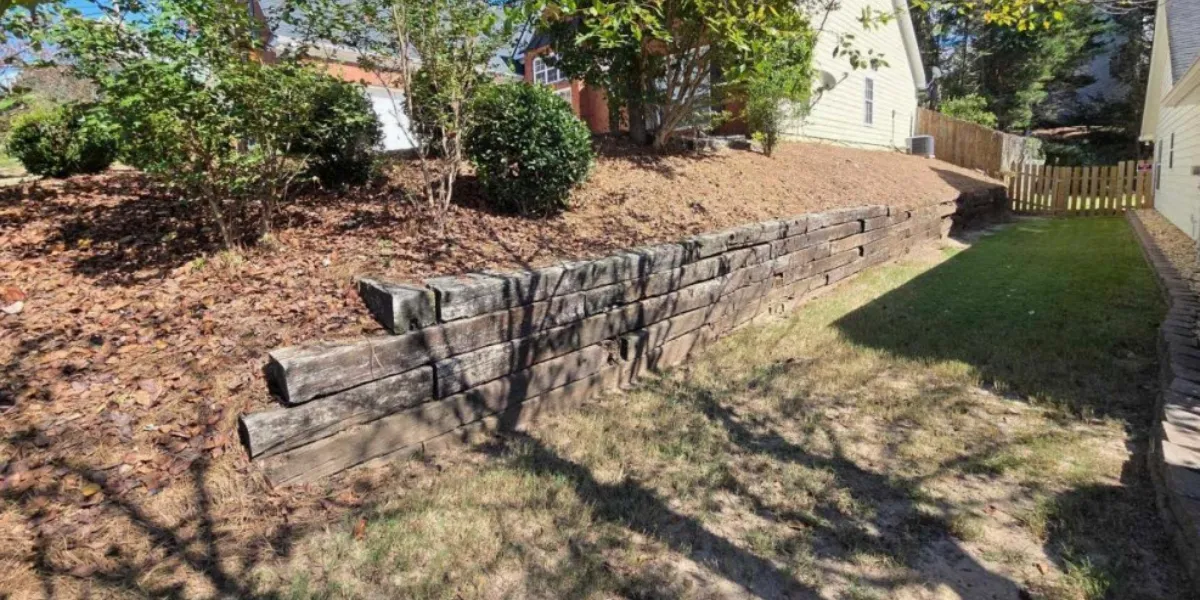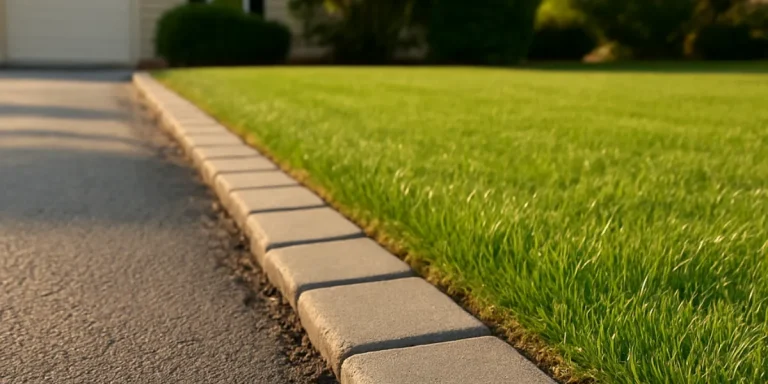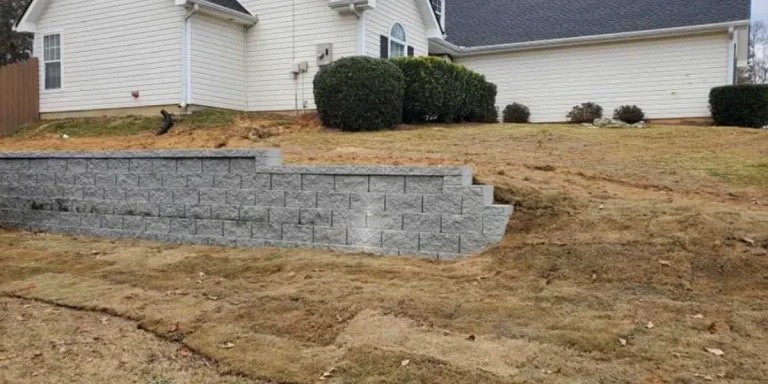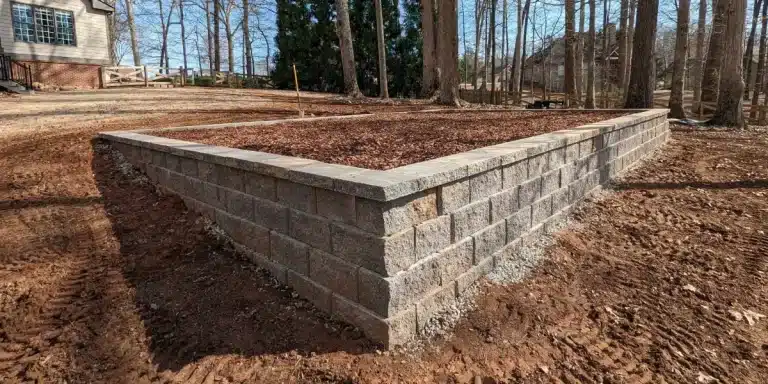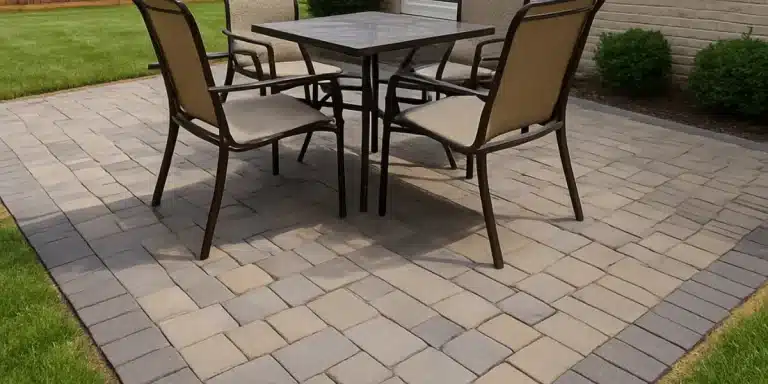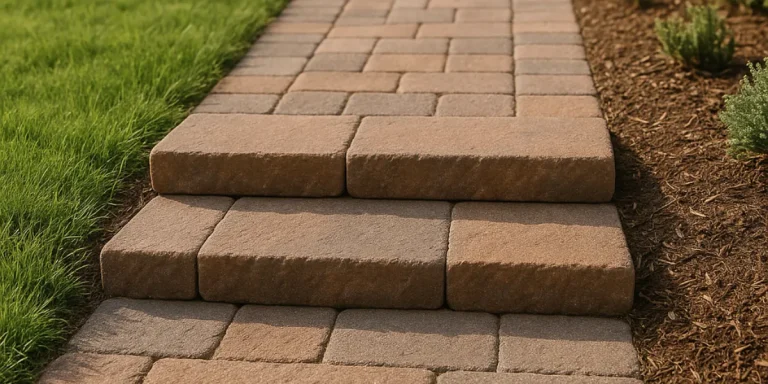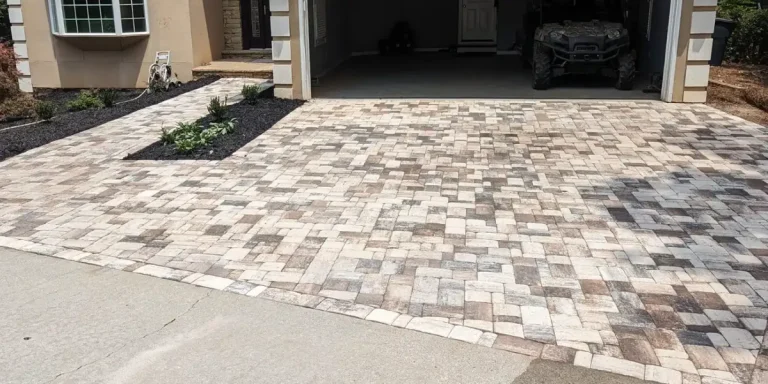Retaining Wall Replacement in Georgia: What to Do When Yours Starts to Fail
Retaining walls aren’t just about curb appeal — they play a critical role in managing sloped yards, preventing erosion, and supporting driveways, patios, and structures. But in Georgia’s wet climate and clay-heavy soils, we see more than our fair share of failed retaining walls.
If your retaining wall is leaning, rotting, cracked, or collapsing, you're likely wondering what went wrong — and how to fix it. In most cases, the best solution isn’t a patch job. It’s a full replacement designed for your property’s specific conditions.
Let’s walk through what causes these failures and how to rebuild a wall that actually lasts.
Common Retaining Walls We See Fail in Georgia
We replace a lot of retaining walls in North Georgia each year, and the same underlying problems come up time and time again:
1. Rotten wood and landscape ties
Older timber walls built with railroad ties or untreated wood often rot from the inside out. Between Georgia’s humidity, rainfall, and common termite activity, even pressure-treated lumber breaks down over time.
2. Poorly built block walls
Not all block walls are created equal. Many of the ones we replace were DIY builds or budget jobs — no reinforcement, no drainage, and improper base prep. Without these elements, even interlocking block walls will shift, bulge, or collapse under pressure.
3. Stack stone or dry-laid walls
Beautiful when done right, but when stacked without geogrid, drainage, or structural reinforcement, they’re just a landslide waiting to happen — especially with Georgia clay behind them.
Why Retaining Walls Fail
Retaining walls don’t fail without reason. Most problems stem from a few core issues:
Poor drainage: Without drain pipes, gravel backfill, and filter fabric, water builds up behind the wall. This hydrostatic pressure is one of the most common causes of collapse.
Improper reinforcement: Walls holding back heavy soil — especially with a patio, driveway, or slope behind them — need geogrid, deadman anchors, or other reinforcement. Without it, they can’t support the load.
Weak base preparation: A wall is only as strong as the foundation below it. Without compacted gravel a proper base course, and proper leveling, movement is inevitable.
Too much surcharge: Retaining walls near homes, driveways, or pools carry extra weight. That added stress requires engineering and stronger materials — not just stacking blocks or timbers.
Why Spot Repairs Aren’t Enough
We get this question a lot: “Can you just fix the leaning section?”
Unfortunately, no. A leaning or collapsed wall is usually a symptom of a larger structural issue — and spot repairs won’t address the cause.
The damage is often below the surface:
-
- Soil movement behind the wall
- Water buildup with nowhere to drain
- Internal rot or decay
- Foundation issues under the wall
Without a full teardown and rebuild, you’re likely to spend money on temporary fixes that won’t last through another rainy season.
How We Replace Retaining Walls the Right Way
Here’s what goes into a proper replacement that stands the test of time:
-
- Safe demolition and removal of the failed wall and surrounding debris
- Excavation and base prep, including deep compaction and leveling
- Drainage installation — perforated drain pipe, gravel backfill, and filter fabric to relieve pressure
- Use of Keystone® Retaining Wall Systems, designed for strength, flexibility, and long-term durability
- Proper reinforcement, including geogrid or anchors, based on wall height and surcharge
- Backfill and grading, to stabilize the slope and move water away from the structure
Why We Use Keystone® Retaining Wall Systems
We trust Keystone® for a reason — they manufacture engineered segmental retaining wall systems that are proven to perform under pressure.
Keystone’s designs:
-
- Include mechanical connections for superior strength
- Are available in multiple styles to match your property’s look
- Meet or exceed industry standards for structural integrity and drainage compatibility
- Work with geogrid reinforcement systems for tall or surcharge-loaded walls
- Are ideal for Georgia’s clay soils and seasonal moisture challenges
Whether it’s a decorative garden wall or a structural solution holding back a driveway, Keystone® delivers performance you can rely on.
Serving Homeowners Across Northeast Georgia
We specialize in retaining wall replacements for homeowners across the region, including:
-
- Hoschton
- Braselton
- Jefferson
- Winder
- Flowery Branch
- Buford
- Oakwood
- Gainesville
- Cumming
And nearby areas across Jackson County, Hall County, Gwinnett County, and beyond
Not sure if we serve your area? Just reach out — we’re happy to check and we are always willing to travel a little further than we usually do for larger retaining wall projects.
Let’s Rebuild It Right — From the Ground Up
If your retaining wall is failing, the time to act is now. Waiting can lead to:
-
- Safety hazards for people and pets
- Landscape damage
- Structural problems near your home or driveway
- Increased replacement costs down the road
Let’s rebuild your wall the right way — engineered for your slope, soil, and property needs using high-performance materials like Keystone®.
Contact us today to schedule a free on-site quote.

